When I am out thrifting, looking for Stuff for my house, I call to mind a quote by William Morris (the one from the wallpaper):
“Have nothing in your house that you do not know to be useful, or believe to be beautiful.”
I think it’s important to note here that usefulness and beauty are given equal weight.
It could be Stanleys. There’s those women with charmed nails who refill their ice containers, or make coffee with a different Torani syrup every day (it’s largely women who make this content and consume it). In recent months, however, there have been a new spate of reactionary videos, also by women, criticizing the “overconsumption” (e.g. depressiondotgov on TikTok), as well as several videos tagged #underconsumptioncore, in which creators describe the items they use up until there’s nothing left, minimalist skincare routines, “deinfluencing” items at Target. These videos still promise an idealized life — a peaceful one, with a Norah Jones song playing in the background. A life free from aesthetic concerns (while still, at times, looking aesthetically pleasing) focused on friends and creativity, never plagued by the desire to buy ANYTHING. Wouldn’t that be nice?
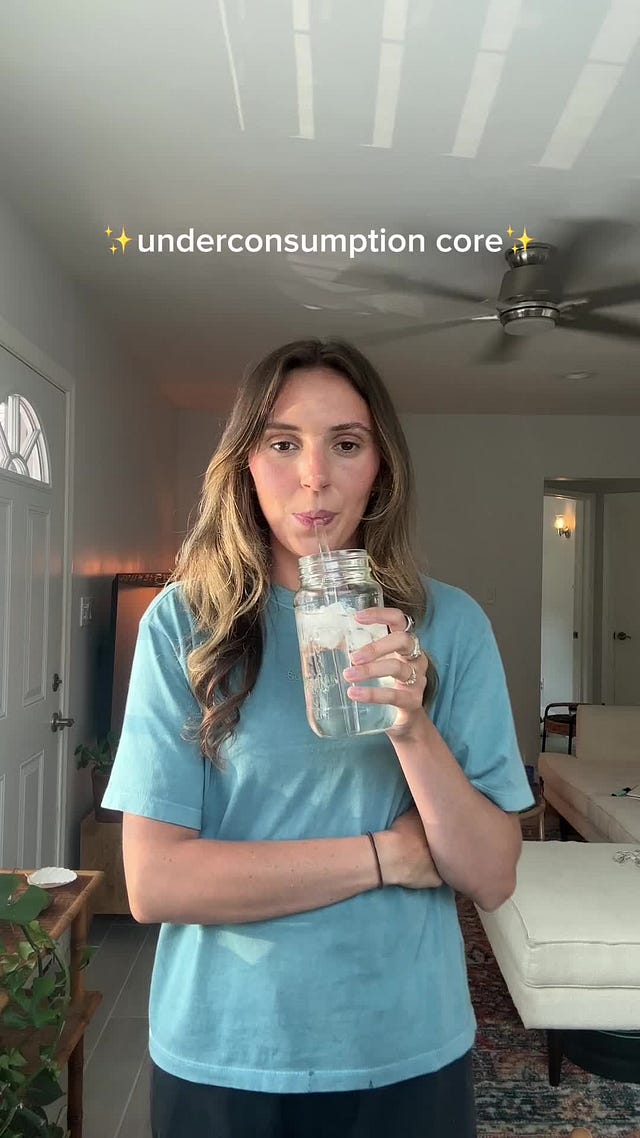
 Tiktok failed to load.
Tiktok failed to load.Enable 3rd party cookies or use another browser
Maybe you remember that documentary about minimalism (Minimalism: A Documentary About the Important Things) from 2015. I saw this documentary when I was 16, and it bestowed upon me a scarcity mindset that I have yet to recover from. The equation became simple in my mind: owning Stuff == BAD.
I look at the house from that documentary now and find it laughably fucking sterile. They really had us convinced that THIS was somehow morally superior to a cozy house.
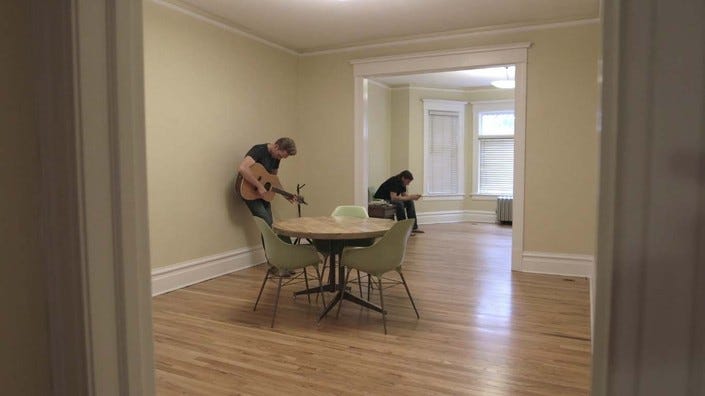
If you didn’t see this particular documentary, you probably experienced the early overconsumption moral panic in some way. Maybe you read a blog about creating a “minimalist” all black-and-white capsule wardrobe or heard about people making a hydroponics setup in their spare bathtub.
When I watch movies from the last several decades, I am often struck by how much Stuff is in people’s homes.1 For example, in When Harry Met Sally, when Marie and Jess move into their apartment: this is supposed to be the apartment of newlyweds. Not just newlyweds, but a New Yorker writer and a display designer for storefronts. How many 30-something newlyweds do you know currently that have an apartment that looks like this? Real furniture, not from Urban or IKEA.
Again, recently when I watched Ripley I noted when Tom buys one item to complete his furnished apartment in 1950s Rome: a heavy, handmade (fateful) ashtray.
Whether you like the ornate style or not, this apartment is filled with Stuff that is much nicer in quality than what your average entrepreneur (scammer) could afford to buy today. At the same time, there is not so much Stuff in this apartment that there isn’t storage for the non-aesthetic things — of which we have a lot more of, granted. Tom Ripley doesn’t have to pick the least obtrusive place to connect his internet router.
Contrast these interiors with the apartments that are provided by the producers to the couples of Love Is Blind. These Wayfairified apartments are, by current standards, pretty nice and put together. Despite being staged for TV like both of the other apartments I mentioned, the Love is Blind apartments are significantly more sparse than either the When Harry Met Sally apartment or the Ripley apartment. Yet, if there was a similar apartment or house tour in a video online, people would be all up in the comments talking about “overconsumption” and “microtrend final boss.”
My conclusion here is that the impulse to acquire Stuff and create a home filled with objects is not a new one. What is new, however, is the moralization of overconsumption in the mainstream — it’s not just the dirty hippies saying it.
Now I have another rhetorical: do any of your friends’ apartments even look like this one from Love is Blind? What about your parents, the people who supposedly have all the money? What about your grandparents? I don’t know about you, but my parents, my in-laws, all of the people over 40 that I know have bought over/under two pieces of furniture since the early 2000s. They’re not “overconsuming” furniture because, while maybe a little outdated, their furniture has held up. And your friends your age? There’s that sinking feeling that even if I did have money to buy furniture from West Elm, the pieces I could afford (and that would be stretching it) wouldn’t have the same lasting quality as the homely couch sitting in the bonus room at my in-laws house. No one I know up to their 30s lives in a house that looks like my grandma’s, which has a lot of old furniture collected over her lifetime that has stood the test of time, and definitely more Stuff than I have at my house. We all have cobbled together pieces from Marketplace and the occasional new piece from Amazon or Target because that’s what we can afford. Most people I know ARE using old shoeboxes to organize under their sinks and in drawers. Most people I know don’t have every shade of the Rare Beauty liquid blush. We are using plastic takeout containers as tupperware, old candle containers to grow plants in. I think it would be a mistake to see these videos of people with their Stanleys and Scubas and think of that as the norm, because when we look around in our real lives, there is just not evidence of it.
I caught myself the other day in an instance of “overconsumption.” Pookie (yes, Pookie) was applying the Summer Fridays Jet Lag mask on Instagram Reels and talking about her pregnancy. The tube is so pretty, and it looks so hydrating on her! Maybe I need to try it, I thought to myself. Looking at the ingredients, though, it doesn’t even seem like it would cut it for the type of dryness my skin experiences in Arizona. My current moisturizers are working for me and they are probably still my best options. What a close call! Even so, I think that labeling buying the Summer Fridays Jet Lag mask as “overconsumption” in this case is being extremely overcautious. Let’s check my assumptions here:
I shouldn’t buy a more-expensive pretty thing when the less-expensive average-looking thing also works.
I shouldn’t spend money on something supplementary — only on the strictly necessary.
I shouldn’t have curiosity about a different product than the one I have currently have.
I don’t think it right to moralize having a lifestyle of “underconsumption,” because most of us are already doing it out of necessity. I just don’t think we have to worry about it, really! The new Stuff that is available to us isn’t that high quality, and we already can barely stretch our disposable income to buy a new desk, a new couch, even a used desk or used couch. Can you imagine having the disposable income to buy everything in the Ripley apartment, new or used? You can’t!
There is an episode of the Maintenance Phase podcast in which Aubrey Gordon & Michael Hobbes debunk the Michael Pollan book The Omnivore’s Dilemma. I remember this book being extremely popular in the same era as the Minimalism documentary. In this podcast episode, Michael and Aubrey conclude that Pollan’s solution, to buy locally-produced organic food, is ultimately an individual solution to a systemic problem that is only available to those with the means to afford those types of food. When people buy organic, local food, they can assuage the anxiety that they feel due to the practices of the food and agriculture industries that they cannot change. They can take steps to protect themselves. I see comments on “underconsumptioncore” TikToks saying that these videos are soothing, assuage the anxiety created by “overconsumption” on TikTok. But is it my fault that the desk I could afford at one point from Target that’s now wobbling, missing bolts, with chipped laminate veneer over particle board, isn’t made to last? Is it my fault entirely that I will have to replace it? Is it my fault that I didn’t have the time to source the perfect sustainable, in good condition, vintage, non-chipped desk that suits my needs and my space that I could afford?
We all have to buy things, and it’s silly to act on TikTok like you’re somehow above that. We are all also humans with souls that appreciate beauty, as the William Morris quote makes space for. Some people can afford to make themselves feel better by buying sustainable, vintage, and still have a beautiful home. Some people can’t afford to buy sustainable and vintage, and still have a desire for beautiful things but buy them from places like Homegoods or Wayfair. And some people don’t give a shit about beautiful things at all. Maybe you do know someone who “gave in” to the Stanley trend and have multiples of them. Do they have the newest car, though? Do they have new furniture? New clothes? Do the people who have a million Scubas go out to eat all the time? We just don’t have a way of knowing those things. And the people who do make content off of their consumption habits are most likely doing exactly that — running a content creation business. I like to believe that those individuals are minority extremes. Anyone who displays their “overconsumption” online or, on the flipside, presents their underconsumption as a moral triumph is deliberately not telling the whole story.
Of course there is acknowledging our limited control over a situation, be it mass-produced furniture and clothing or the food industry, and then there is giving up. I am not suggesting that we give up. I am only suggesting that it should not feel morally or financially make-or-break for me to try the Summer Fridays Jet Lag mask. Maybe it’s controversial, but in trying to erode my scarcity mindset, I have actually allowed myself to accumulate MORE clothes. The thing is (if you can’t tell) I really like clothes. Some people liked Beanie Babies and collected them, and I like clothes. That statement does not carry with it any moral weight. In fact, it’s a display of trust in myself that I buy another set of hangers when I need to buy another set of hangers, because I have had too many experiences where I purged my closet, feeling the need to be ascetic and “minimalistic” all of a sudden, and then later regretted getting rid of something. So next time the clutter in your home stresses you out, ask yourself where the stress is coming from. Is it frustration/pressure that is external to you? Is there something you can do about it? If there isn’t, then consider taking the pressure off of yourself.
How do you feel about your relationship to under and overconsumption? Do you disagree, and think that we could all be better about our consumption?
I know that set dressers and production designers curate these homes for TV, but I am comparing them to other, more recent sets and production designs so I feel it’s a fair comparison.




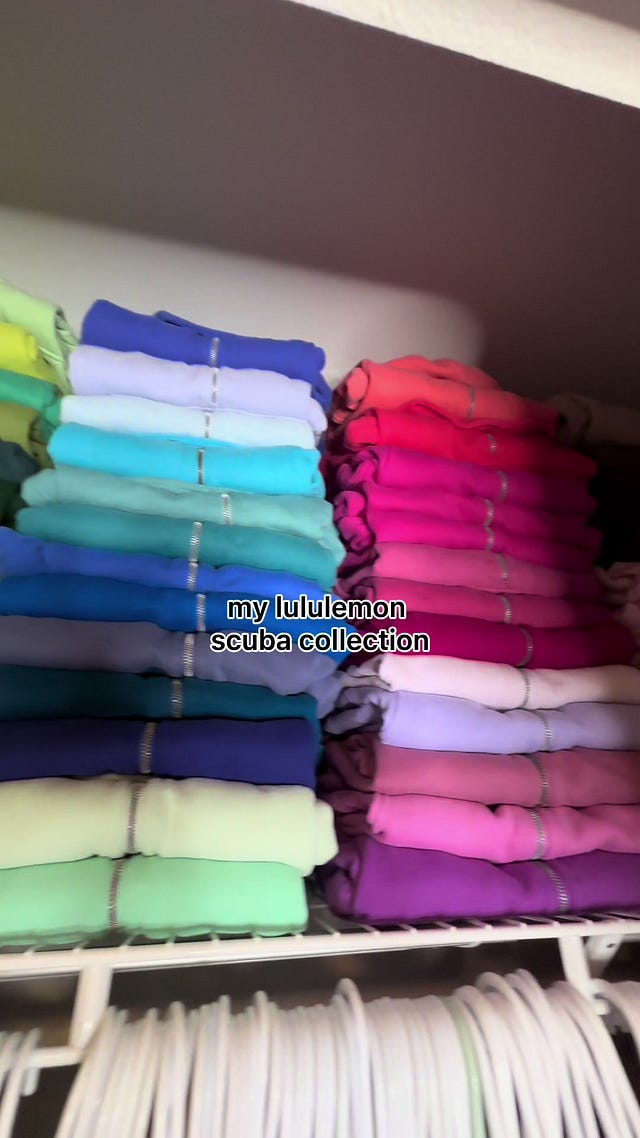
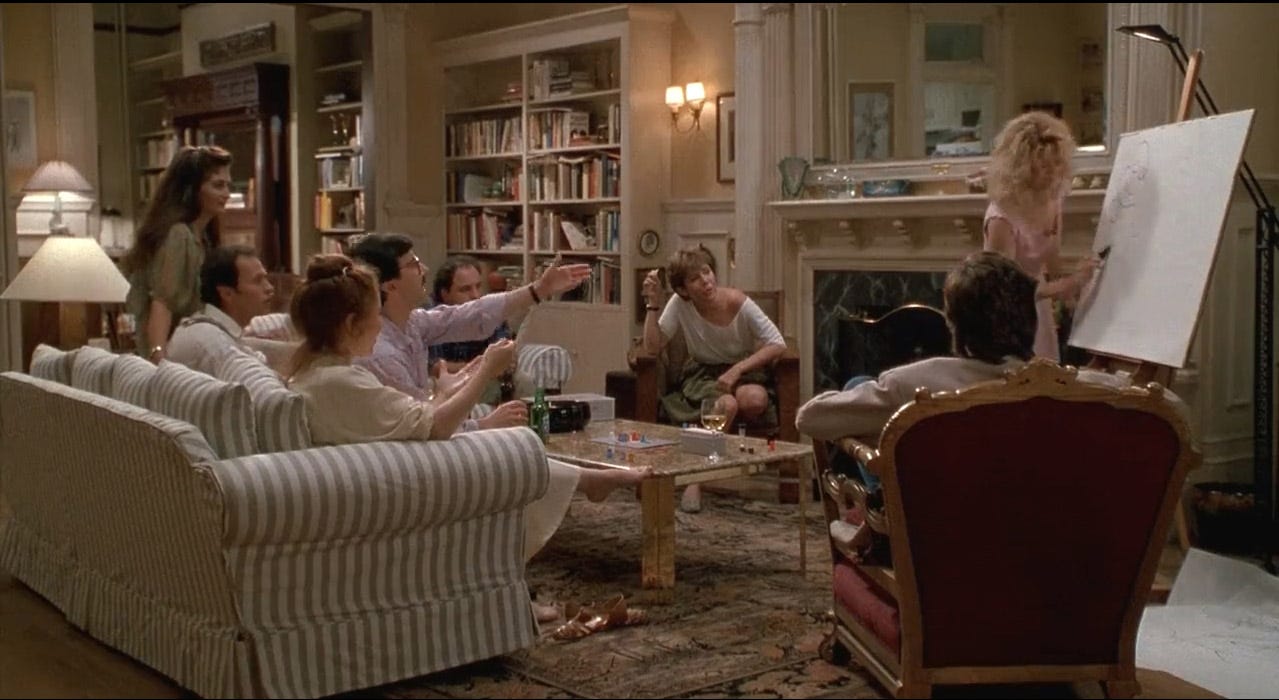
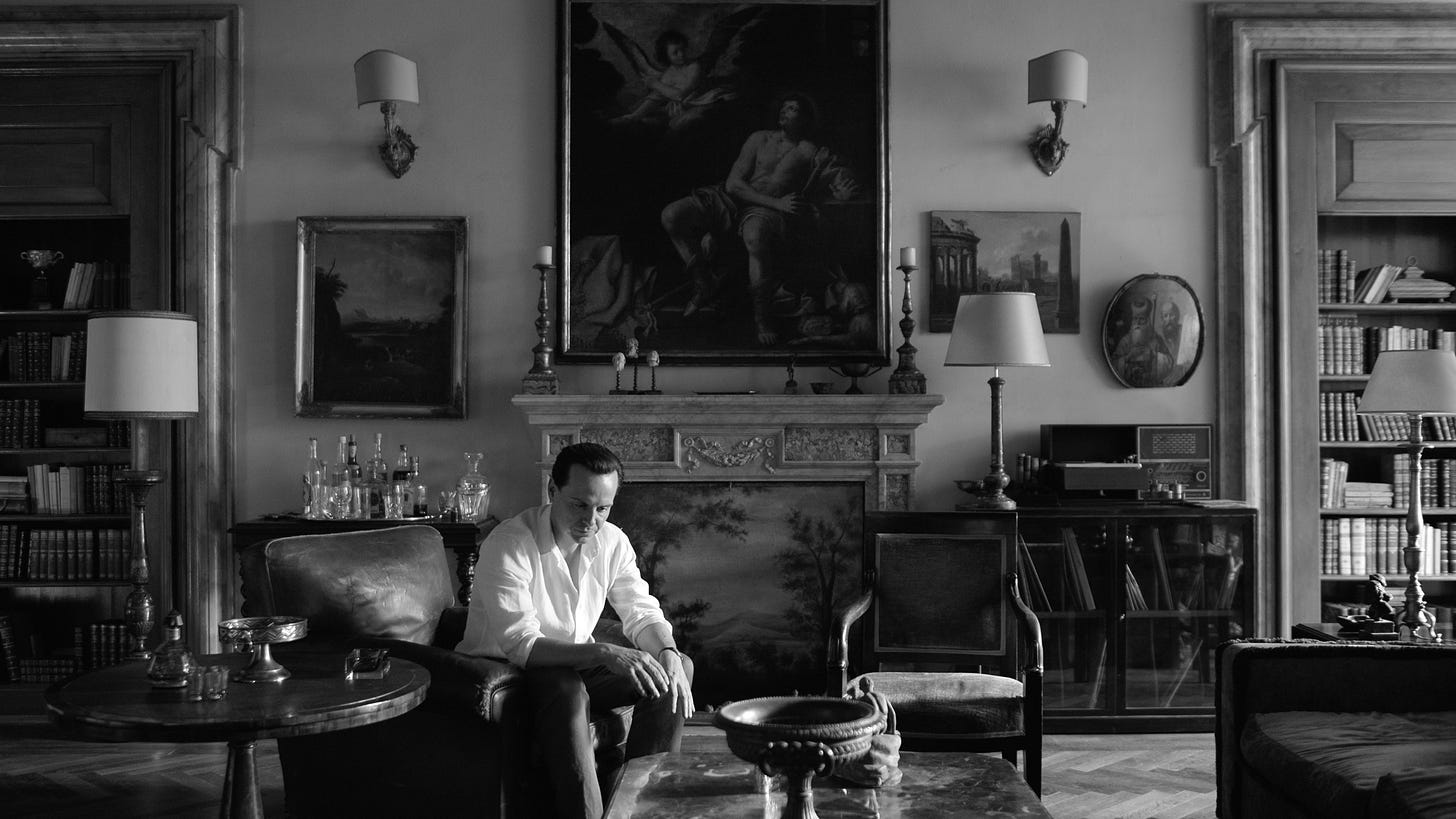

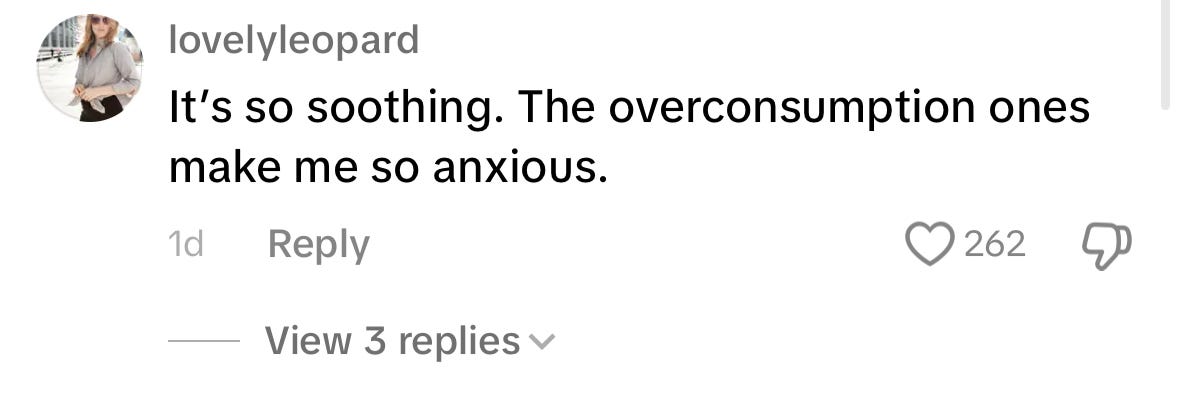
Ha so weird I wrote a random note about this yesterday and we have the same sentiment but came to it down a different path. I feel as though no one is living the underconsumption core life because we can't. I've bought 5 blenders in 6 years because they keep breaking. I buy expensive ones, I research but companies do not care, they do not fix and if you have one under warranty they'd rather send you a new one than fix it. The blender I had before that was ten years but it got broken in a move. So the trope of having the same hair straightener for 15 years just isn't a thing anyone. Anything I have purchased in the last 5 years trash and I feel like underconsuming isn't available anymore. And socks! Socks! I used to buy ten pairs every 5 years and I was sorted I'm now buying ten pairs every year and they're full of holes in 12 months. My sock useage hadn't changed the socks have changed.
I find the term "underconsumption" a misnomer at best -- you either consume or you don't, right? You can't "underconsume" unless you're actually being denied something that's essential to life, like food, and shelter. Maybe I'm missing the point, but I think it's a little insulting to people who are genuinely struggling, for content creators to make cute videos about shopping secondhand and not getting your nails done, and call it "underconsumption core". It seems well-intentioned, but it ends up sweeping actual issues under the carpet, like the fact that a lot of consumer goods are not made to last, and we have real systemic problems to deal with. And it invites people to think of sustainable consumption as virtue-signalling.
I've been on a low-buy this year and because I have the free time, I've even been able to put off buying basics like socks by mending them (they look terrible but it worked!). But I can hardly expect people with more responsibilities and fewer resources to do the same. I hope people don't beat themselves up too much when they see "underconsumption core" videos and feel like they're doing it all wrong -- the system is screwed, and while we can learn to control our craving for new things all the time, we shouldn't be blamed for replacing things we need, or occasionally buying things that bring a bit of happiness into our lives.